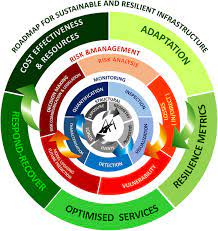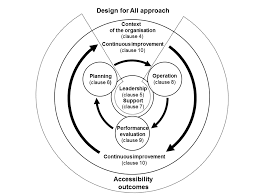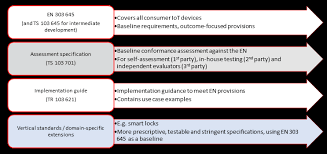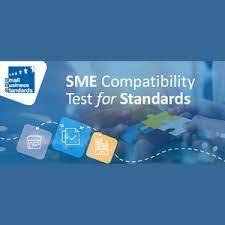The functioning of society depends on the transportation of goods and persons. The infrastructure required to enable transportation is built to ensure that this can happen safely and smoothly, providing specified high levels of service. As Europe has already experienced on many occasions, reductions in service due to potentially disruptive events, such as floods, earthquakes, heavy snow falls, fog, high winds, or cyberattacks can have significant societal consequences.
In this context, transport infrastructure managers must minimize the impact and potential consequences of these disruptive events. To do so, objective information on the service provided by their transport infrastructure and its resilience to external adverse events is necessary. In order to help them acquire this information, in November CEN and CENELEC published new CWA 17819:2021 'Guidelines for the assessment of resilience of transport infrastructure to potentially disruptive events'. This document provides managers with guidance to proceed a complete and systematic definition of service and measure resilience, in all situations with which the manager is confronted, and to help identify the suitable interventions to enhance such resilience.
CWA 17819:2021 is freely available for download here. It was developed by CEN/CLC/WS 018 ‘Assessment of the resilience of transport infrastructure to potentially disruptive events’, whose Secretariat is held by UNE, Spain’s National Standardization Institute.
Bureau of Indian Standards (BIS), national standard development body of India, has published Indian Standard IS 17802-"Accessibility for ICT Products and Services, Part 1: Requirements" which is a technical adoption of European Standard EN 301 549 v3.2.1 as developed by CEN, CENELEC and ETSI. Modifications to Indian Standards have been made to adapt it to India and are limited to referencing the relevant regulatory context (Rights of Persons with Disabilities Act, 2016) and the official languages of India. Part-2 for this Indian Standards published, to determine the conformity assessment is under formulation at BIS.
Environmental Product Declarations (EPD) present quantified environmental information on the life cycle of a product, thus enabling comparisons between products fulfilling the same function. They are based on the Life Cycle Assessment (LCA) methodology, as described in the EN ISO 14040 series of standards. EPD promote transparency and increase awareness around the environmental impact of products. They support manufacturers in substantiating environmental claims and optimizing their supply chain and allow buyers to make informed product comparisons.
The recently published standard EN 15942:2021 'Sustainability of construction works - Environmental product declarations - Communication format business-to-business' aims at harmonizing the way in which Environmental Product Declarations are communicated in Europe. This document is applicable to all construction products and services related to buildings and construction works. It details the communication format of the information defined in the related standard EN 15804 'Sustainability of construction works – Environmental product declarations – Product category rules'.
ETSI has released the test specification for the existing ETSI EN 303 645, the world leading consumer IoT security standard. This test specification, ETSI TS 103 701, describes how a conformity assessment is performed in a structured and comprehensive way. This will allow supplier organizations such as manufacturers, vendors or distributers to assess the compliance of their devices against ETSI ETSI EN 303 645 in self-assessments or via testing labs. User organizations can also apply the test specification for in-house testing.
ETSI EN 303 645, released in June 2020, involved all stakeholders of the IoT cybersecurity landscape and was developed with industry, academics, testing institutes and international government bodies. As more consumer devices connect to the internet, the cybersecurity of the Internet of Things (IoT) has become a growing concern. The EN is designed to prevent large-scale, prevalent attacks against smart devices that cybersecurity experts see every day.
SMEs are the businesses that could potentially benefit the most from standards, but they face fundamental challenges when it comes to taking up standards and use them to reach their full potential. To help address this issue, SBS has developed the SME Compatibility Test for Standards. The SME Compatibility Test, an absolute first in the field of standardization, can measure and quantify the impact of a standard on SMEs activities and rate it in terms of SME-readiness. The test allows standard-makers and SMEs to evaluate both existing standards and new standards under development. The test has been developed thanks to the work and support of SBS experts and builds on the CEN-CENELEC Guide 17 - “Guidance for writing standards taking into account micro, small and medium-sized enterprises’ needs”.










